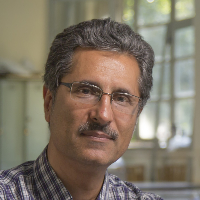The Evolution of the Perception of Meaning of Imam Reza Shrine over Time
With respect to today's international standing of the religious city of Mashhad in the Islamic world, we need to highlight the shrine, according to surrounding context in order to manifest its organization. Lack of attention to the restoration and reorganization of the city texture may reduce tourism, population displacement, economic recession and, above all, the loss of cultural identity and its religious role. While increasing visual quality and sense of urban areas can be an important factor in attracting religious tourists and pilgrims from all over the world to the holy city of Mashhad, maintaining aspects of identity and memory of the local residents and visitors is of prime importance. It seems that change over time can lead to changes in the surrounding and conceptual and visual aspects of the landscape around the shrine of Imam Reza (AS). It seems that the main cause of changes in various aspects is an attempt to reduce the distance from the shrine and its spiritual atmosphere. In fact, we try to answer the questions about the dimensions of perception that have changed over time.This article focuses on the aspects of meaning in terms of texture perception about the shrine of Imam Reza (AS) in which, during the passage of time, the perception of meaning in parts of cognition, emotion, and interpretation and valuation assessment have been changed. To prove this hypothesis, this study examines the changes in the streets leading to the shrine. The study uses social documentary and survey research methods. 105 people are randomly selected and a questionnaire including open and closed questions have been distributed among them. SPSS and Excel Data analysis softwares are used to analyze the data. First, The Pearson correlation test showed a significant relationship between the dependent and independent variables. The correlation between the dependent variable to the independent variables with Sig. <0.05 is a meaningful relationship. The regression coefficient between independent and dependent variables were extracted and evaluated. The results show that texture around the holy shrine (The most prominent texture in Mashhad) has lost his physical capacity to perceive the meaning of place as a shrine. More than 80% of the respondents of this study believe that the texture around the shrine needs to be changed. The highest regression coefficient = -0.493 and -0.255 show that corresponds thinks that the visual axis of the shrine should be maintained at the present time. So it can be concluded that the mostly changed perception over time is in the cognitive dimension (index of temples in the surrounding texture). Due to the low capacity of the current context surrounding the shrine, cognitive, interpretation, emotion and value perceptions reflect a lack of attention to perceptual dimensions of meaning in architecture.
- حق عضویت دریافتی صرف حمایت از نشریات عضو و نگهداری، تکمیل و توسعه مگیران میشود.
- پرداخت حق اشتراک و دانلود مقالات اجازه بازنشر آن در سایر رسانههای چاپی و دیجیتال را به کاربر نمیدهد.


